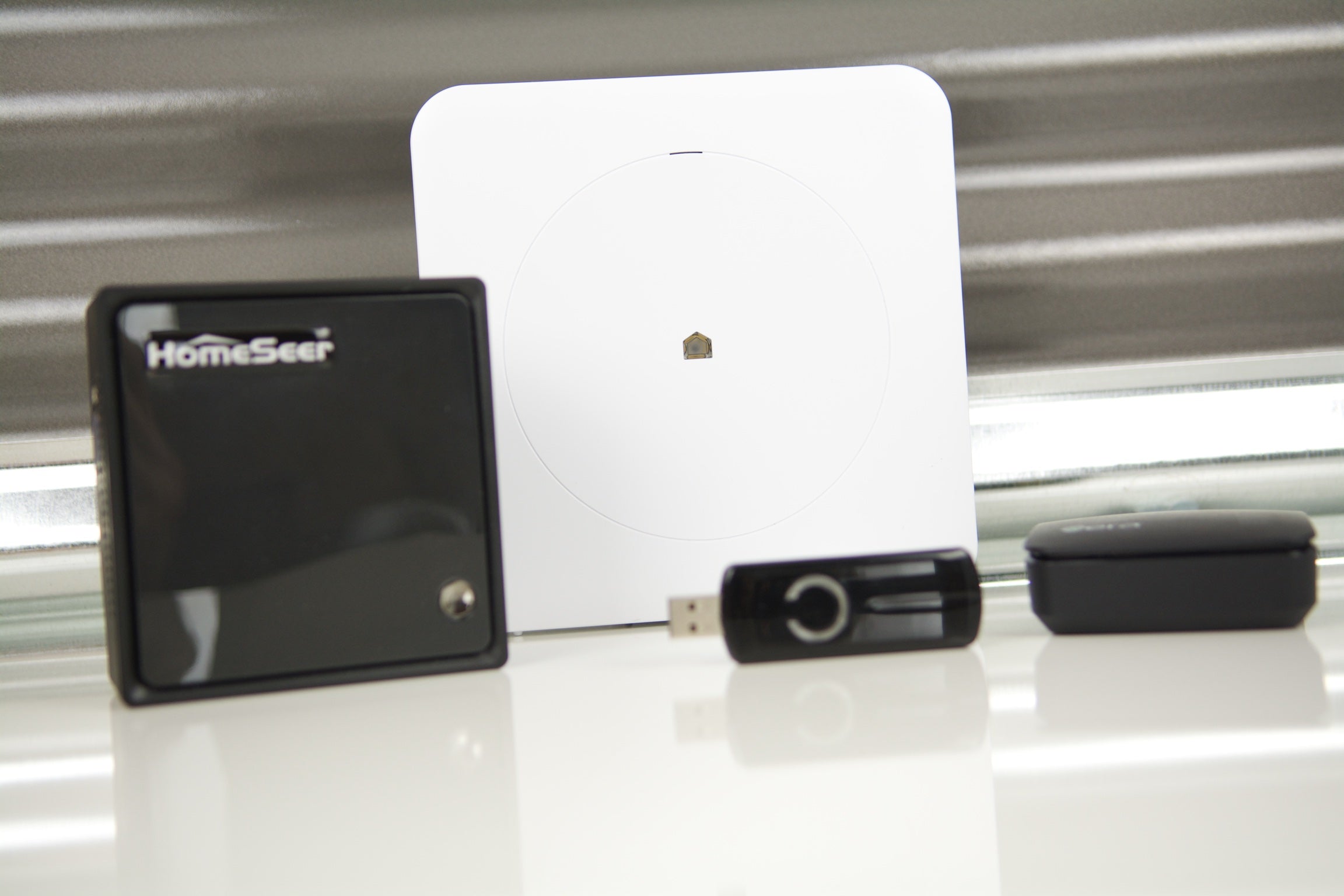Choosing a Z-Wave Controller
Selecting a proper controller to meet your needs and expectations is a huge part to stream line your Home Automation Project. Depending on what you want to achieve as well as what your budget allows for, we will help steer you towards the right path to connecting your home.
The first thing we recommend you doing is thinking of these questions below:
- What got me excited about home automation? (Friends house, TV ad, vacation property you stayed at)
- What devices do I already have and/or want to control? (Lights, thermostats, door locks, Sonos, etc.)
- Do I want an alarm system or have one? (Yes but it's not a smart one)
- Do I want to self monitor my alarm? (Tell me more about this)
- It's for my home or….? (Vacation house, business, etc.)
- What do I want my controlling interfaces to be? (Phone App, Tablet App, in wall Scene Controllers, TV remote, etc.)
- Am I installing this myself or am I hiring someone?
- What’s my budget?

Right now the home automation industry provides four ways to go about Connecting your Home.
Mass Market Home Automation Hubs
These consumer grade hubs are often cost efficient and a plug and play way into Home Automation. A few of these Z-Wave hubs that fall into this category are the Lowes Iris, Wink, Staples Connect, and the Nexia Hub. These hubs range in price from $50 to $200. Most of the time they are used in personal homes but they do find their way into vacation rentals. They normally have a very dialed in list of items that can be used with their hub, which enables their Support Staff to provide quick and easy answers. Some of these hubs could be used as an alarm system for self-monitoring. Bottom line is these hubs are DIY friendly with easy to add devices and come with easy access to support. The other side to this is they tend to have a shorter life span, limited devices to choose from, and they tend to charge a monthly fee in order to take advantage of some features.
Alarm Systems with Built In Z-Wave Control
If you want to go to work and come home to a professionally installed Alarm System with basic home automation functions, then this is a great option for you. 9 out of the 10 top USA alarm providers trust Z-Wave along side their alarm panel. At this time many cable providers have been offering solutions as well that mimic this category. Some providers are ADT, Alarm.com, AT&T, Cox, Monitronics, and Vivint. They come ready to control lights, thermostats, door locks, cameras and some even allow for water valves. The controller interface can be the alarm panel or tablet/phone app. These tend to have limited support of Z-Wave devices and do not have a way to integrate into the rest of your Connected Home. For some consumers it makes more sense to pay for initial equipment over the period of an alarm contract, making it a spread out financial investment, rather than all at once.
Proprietary Installer Only Systems
Proprietary Home Automation Systems are another option that provides a White Glove installed, high functioning home automation system. These systems start at around 10K and really have no set limit. One way to save a little money on a system like this is to use Z-Wave controlled devices. Many of the open source boxes below can be integrated with Proprietary systems such as RTI, Control4, HAI Omni, Elan and more. URC Total Control and Vera controls teamed up and created one of the first installer only systems to take complete advantage of Z-Wave. Your support staff for these systems is your installer. Proprietary systems will require your installer to make any system changes.
If you have questions on any of these systems please feel free to give us a call as we have dealer trained staff members.
Open Source Home Automation Hubs
Some of the hubs that fall into this category are VeraEdge, SmartThings, HomeSeer, Zipato, and Fibaro. These hubs tend to work with more devices than the other 3 categories stated above and have the most options for controlling interfaces. The reason being is their development team consists of people like you and I. Each one these companies have their own development team, but what’s better than a community of everyday users being able to develop Apps and Plugins for your hub. This allows for a ubiquities development team. All of these hubs tend to work with a wide variety of devices such as Sonos, Nest, Philips Hue and the 1,200+ interoperable Z-Wave devices. Now one thing about being compatible with all these devices is it would be a true feat to have tech support for them all. Many of these companies tend to rely on their online communities to provide support.

